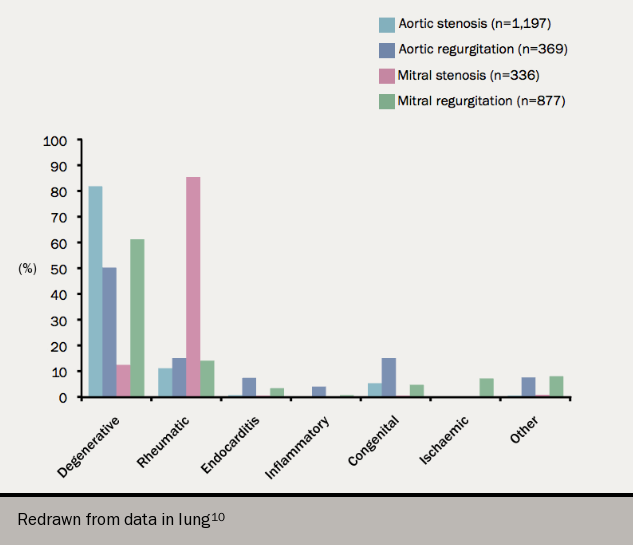Prevalence and incidence
The principle causes of valve disease are given in table 2.

The annual incidence of acute rheumatic fever worldwide is estimated at 471,000 cases2 but with wide geographic variation from 10 to 374 cases per 100,000 population. Rheumatic fever is uncommon after one episode of pharyngitis, but occurs in up to 75% after recurrent episodes. Cardiac involvement occurs in 10-40% after the first attack of rheumatic fever, but more frequently after multiple attacks.
Acute rheumatic fever causes approximately 200,000 deaths per year. In underdeveloped regions, 10-35% of all cardiac admissions are the result of acute or chronic rheumatic disease.9
The development of chronic rheumatic disease depends on the age at the time of the acute episodes and their severity and frequency and is more likely with multiple-valve involvement, failure to obtain medical help and lack of secondary prophylaxis. Single-valve involvement and mitral stenosis are more likely in older individuals with less active carditis.

The worldwide prevalence of chronic rheumatic disease is estimated at 15.6–19.6 million. There is wide geographical variation from up to 7.9 per 1000 population in industrially under-developed regions to only 0.3 per 1000 in developed regions.
Rheumatic disease is the commonest reason for surgery in industrially-underdeveloped regions (figure 4). In industrialised countries, age-related calcific aortic valve and myxomatous (degenerative) mitral valve diseases are the most common (figure 5).
Valve disease is also common in industrially-developed regions (table 3).1 Some 2.5% of the USA population has moderate or severe valve disease. The prevalence rises above age 64 (see figure 6) and is 13% in those aged over 75.1 In the Helsinki Ageing Study,11 the prevalence of at least moderate aortic stenosis was 4.8% aged 75–86 and the prevalence of critical stenosis was 2.9%.


